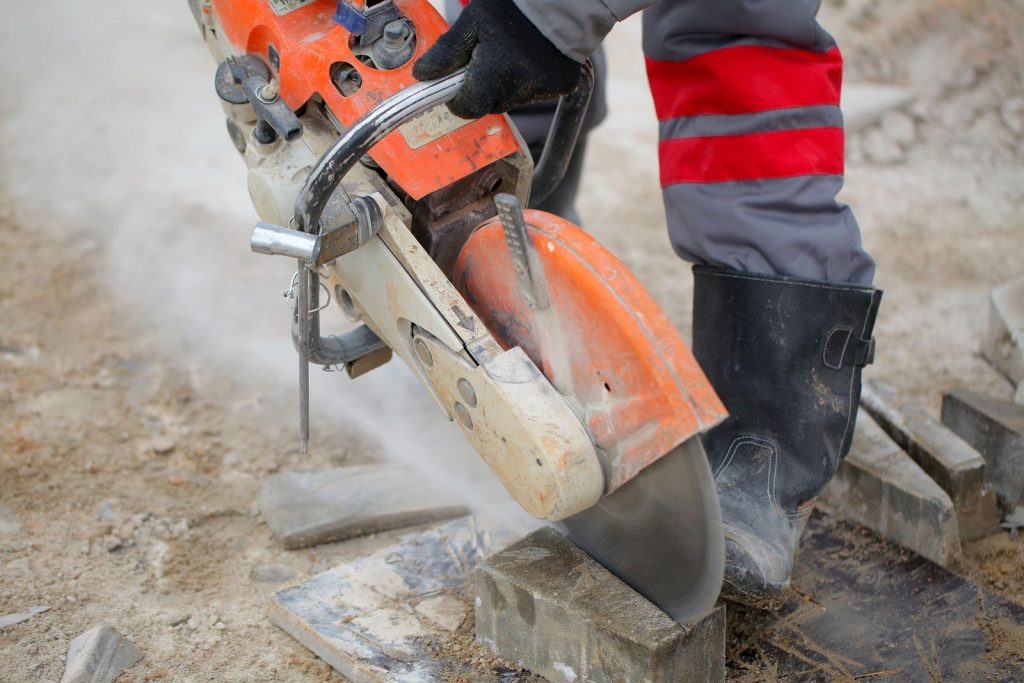Hand arm vibration syndrome (HAVS) has long been a well known issue for those who work with vibrating tools and machinery. HAVS is a condition that could prevent someone’s ability to complete fine motor movements and can bring on attacks in cold temperatures. This is not only a health hazard, but it would directly affect productivity in your workplace.
Trying to work with the symptoms of HAVS can be really difficult for workers but can also have a detrimental effect on your businesses finances. Failure to prevent HAVS and properly monitor exposure to vibration could land you in court with a hefty fine from the HSE (Health and Safety Executive).
So, how do we prevent HAVS?
There is often not an easy answer. Hand-arm vibration comes from using handheld power tools such as:
- Drills
- Chainsaws
- Concrete breakers/road breakers
- Hammer drills
- Hand held grinders
- Jigsaws etc
Workers who need to use these tools as part of their job role simply cannot stop using them. However, if vibration is causing detrimental health issues, exposure needs to be carefully monitored and managed accordingly. Currently workplaces where vibration exposure is commonplace should ensure they have a thorough hand-arm/whole body vibration monitoring system in place. But what happens when that system fails to recognise the actual exposure limits being incurred? Especially for those workers who move from one tool to the next?
Control of vibration at work
The Control of Vibration at Work Regulations 2005 (L140) hasn’t changed much since its original publication, despite a new edition which is dated 2019. The HSE states that “the only way to substantially reduce the risk of someone developing vibration related health problems is to eliminate or reduce employee exposure to vibration”.
But as we have alluded to previously, workers who are skilled at their job and need to use vibration producing equipment cannot just stop working. Vibration in the workplace in most instances cannot simply be eliminated, and what happens when reduction in use cannot be done?
In a perfect world, businesses would have data readily available to know when vibration exposure has reached its limit. However in reality, this would mean far more automation than
is readily available for most companies. Financially this would take a huge amount to even get off the ground.
So how do employers manage and reduce exposure to vibration seamlessly? Well, the answer is vibration monitoring.
Why monitor vibration?
Paragraph 149 of the HSE Vibration at Work regulations states that ‘There is no legal requirement under the Vibration Regulations for continual monitoring and recording of vibration exposure. Using logbooks and tool-timers, and continual monitoring, can distract you from your duties to eliminate or reduce vibration risks.’
Does this mean that vibration monitoring is seen as a hindrance? When the regulations were written, there would have been no way to properly automate exposure to vibration. In 2022 the technology exists to be able to render this null and void. If you don’t continually monitor, how can you be sure that you have done due diligence when it comes to your workforce exposure limits? And how do you know when vibration exposure limits are not going over to the point that it causes significant health concerns for your employees?
Real time risk assessment could provide a belts and braces approach to vibration monitoring.
Real time monitoring of vibration via the use of a vibration sensor which can simply be placed on to the tool that is being used would increase protection for those workers immediately. Once the worker has finished using that specific tool can then take off the device and attach it to the next tool that the worker is using. This would provide a belts and braces approach to vibration monitoring, especially when used alongside traditional vibration monitoring services.
This approach allows for continual monitoring of the exact EAV or ELV values and looking at them cumulatively helps to build a better picture of the vibration exposure limits for each worker. Knowledge is power, it’s the same as using a thermometer in a hot room, and that is exactly how this practice could save employers from hefty fines resulting from workers’ ill health as a result of vibration at work.
So, should real time monitoring be mandated in the HSE regulations? We certainly think this would go a long way in helping to reduce the amount of HAVS cases throughout construction and other industries who rely on vibration tools as part of their daily operations.
For more information about our vibration monitoring services, visit our dedicated page here.













